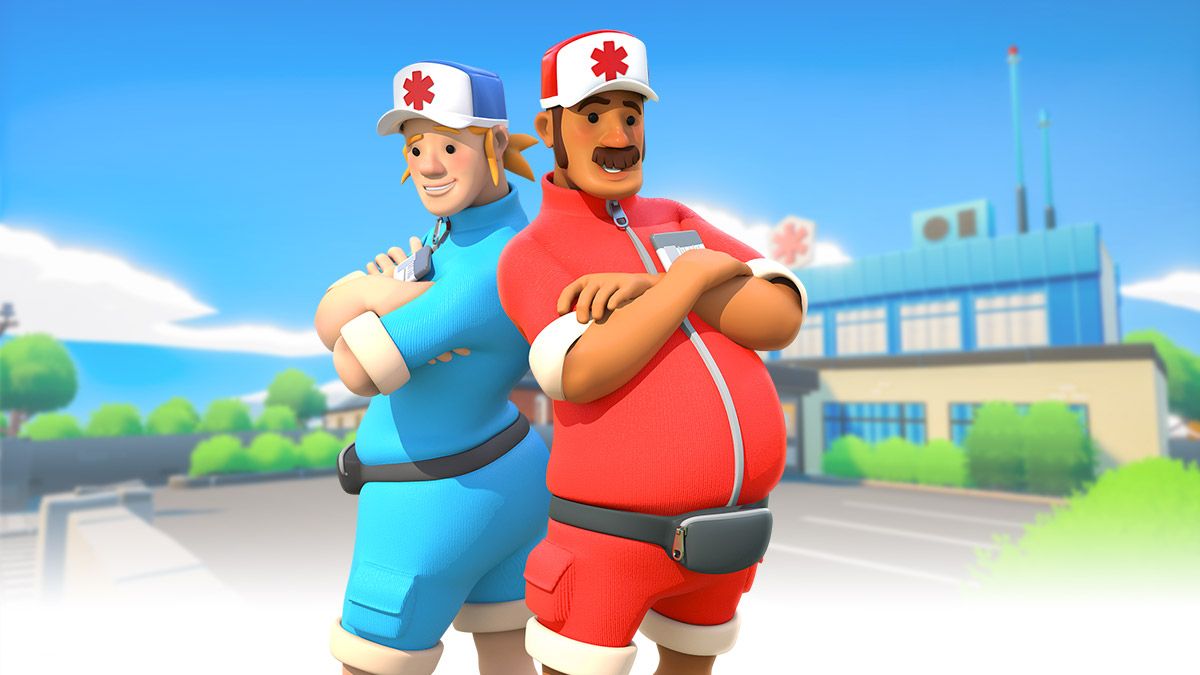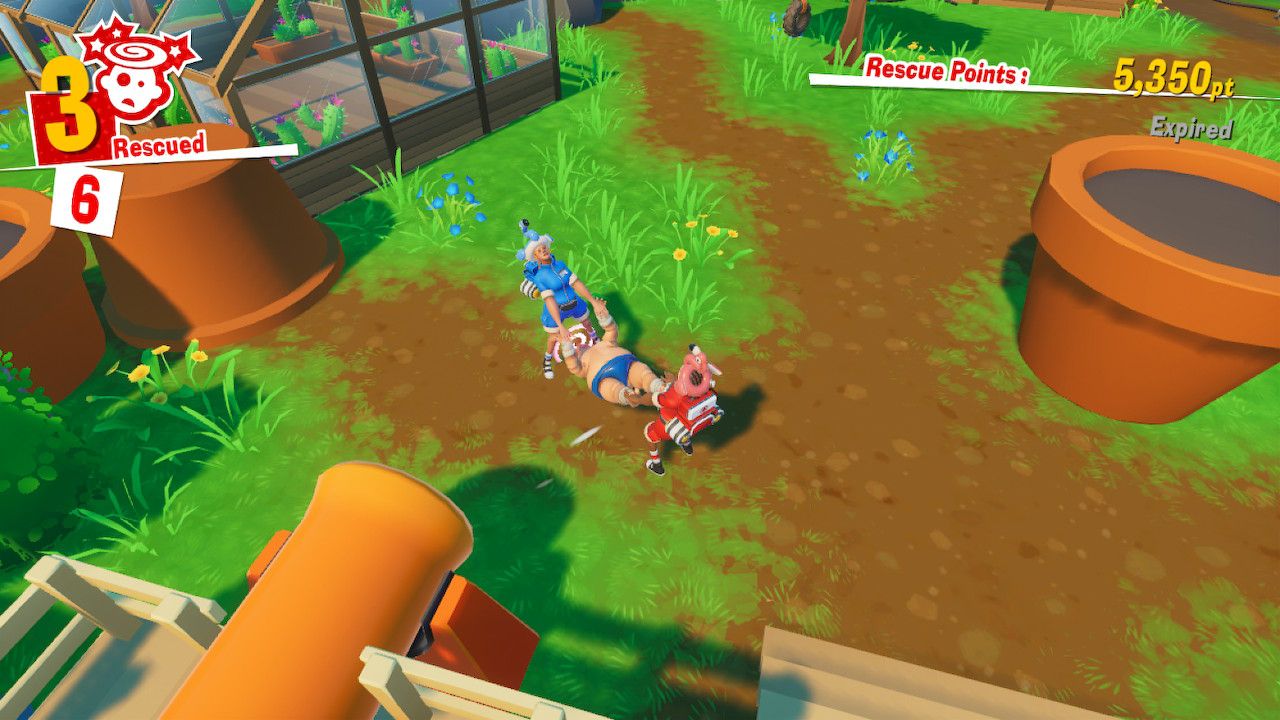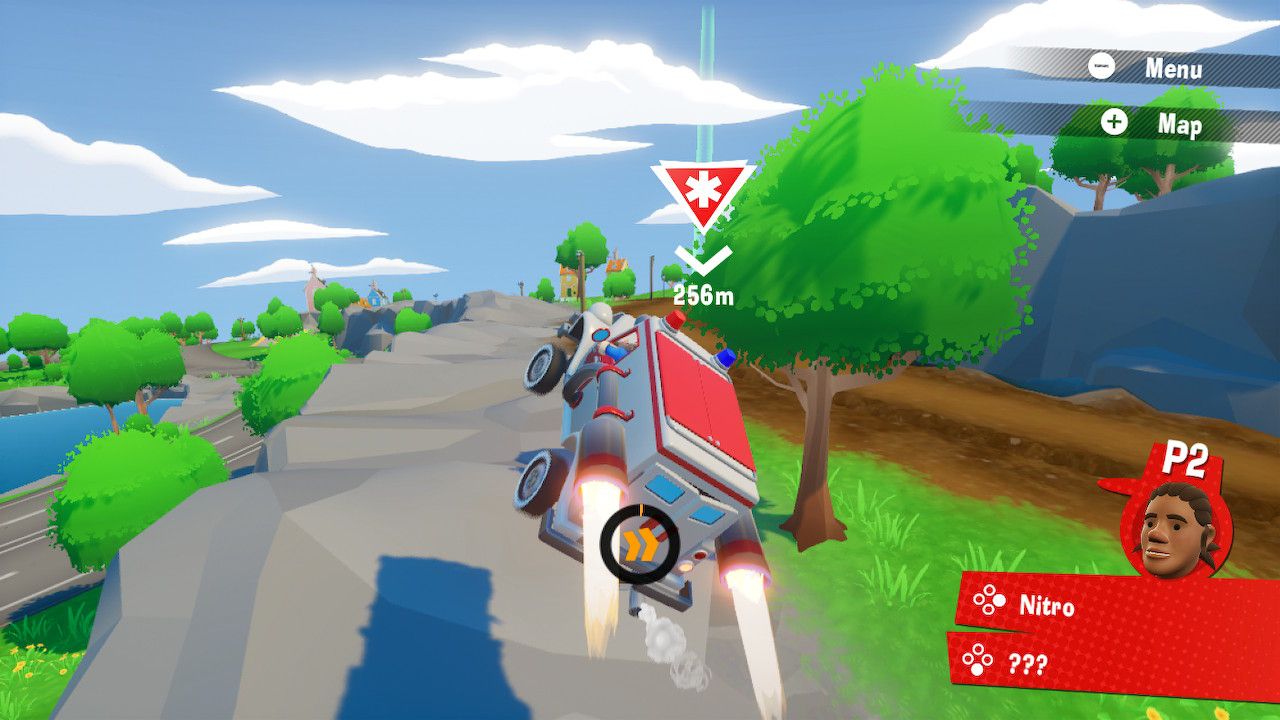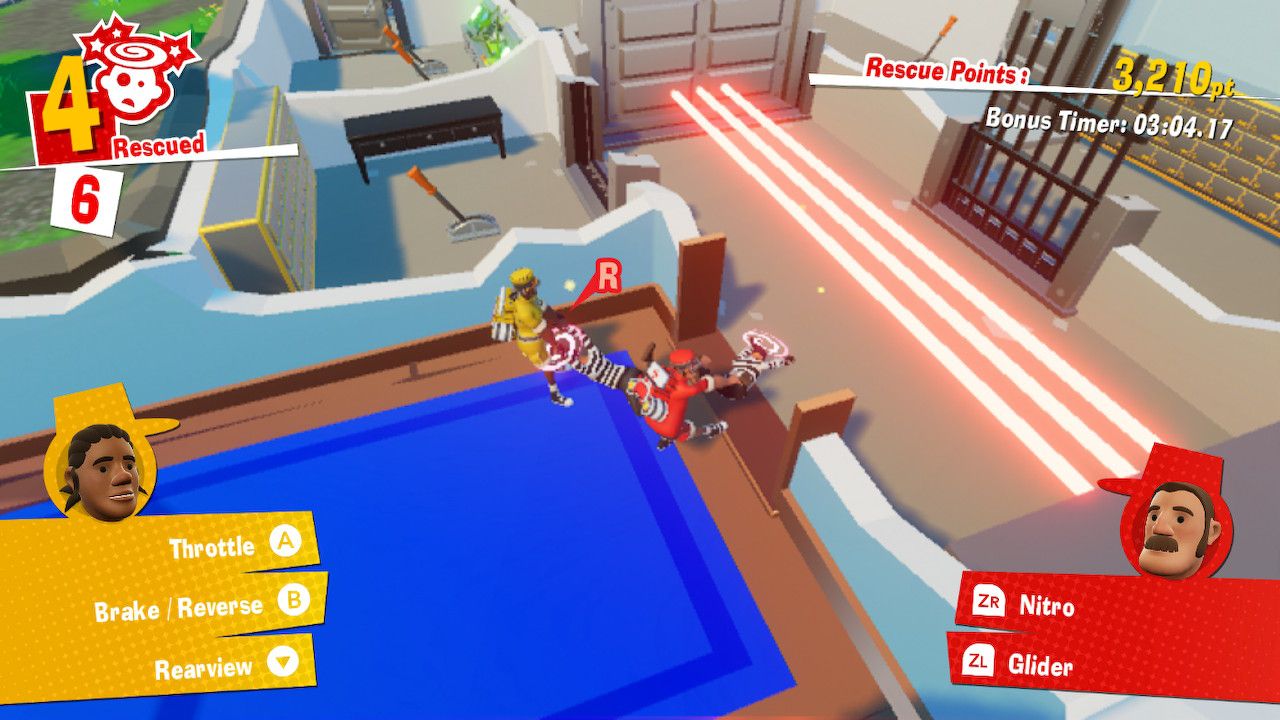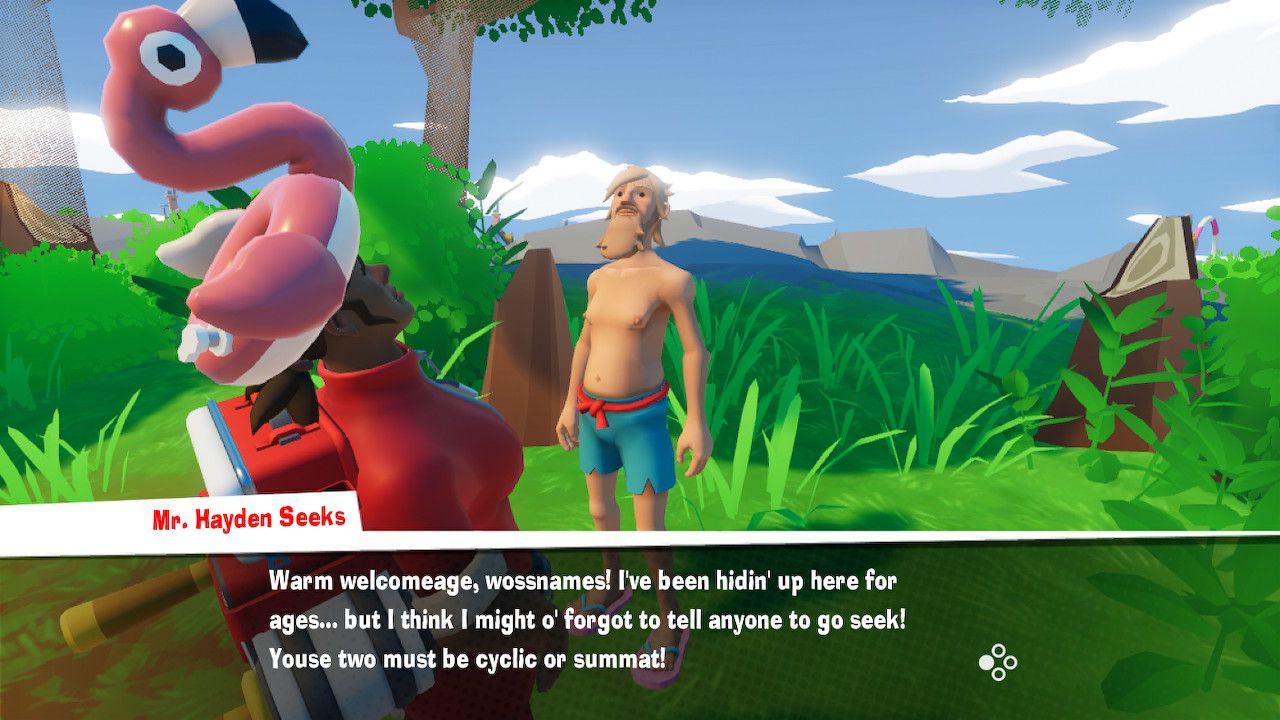Medical emergencies are nothing to laugh about, but when you’ve got two clumsy paramedics dropping a patient numerous times and being whacked on the head by scaffolding you can’t help but have a chuckle. That is exactly what Tarsier Games’ surprise title, The Stretchers, is all about: having a good time and bringing people together in this couch co-op experience.
Tarsier is well known for its eerie platformer Little Nightmares, a game that features dark, gloomy tones and a haunting vignette. As such, it’s a surprise that The Stretchers takes place in a bright, vibrant, and cute world that feels like stepping into a children’s animated TV show. It comes loaded with charm, personality, and what everyone loves to laugh at; floppy physics.
[pullquote]"[The Stretchers] comes loaded with charm, personality, and what everyone loves to laugh at; floppy physics."[/pullquote]
The story finds two paramedics —who appear to be treated like superheroes throughout— going against a former colleague, Captain Brains, who boasts a stunning mustache and has gone evil. He goes around Greenhorn Islands and renders its civilians immobile and dizzy. This coins the medical term for patients in The Stretchers as “Dizzies”. Players are in charge of bringing those patients back to the hospital to be put through a De-Dizzler machine.
How does one do that? By grabbing their limbs, taking them to the ambulance and driving them to the hospital. Of course, it’s not that simple as levels introduce obstacles that make my job harder. Swinging crates, water sprinklers, angry pigs, and more. These irritating but sometimes hilarious barriers for my progress reminded me of Overcooked.
If you wish to play alone, you’ll take control of both paramedics using both Joy-Cons, and if you play it with someone else you’ll use a Joy-Con each. The Stretchers’ controls are simple enough as players only need to move around, pick up, drop, and crouch when required. When players get near an object that to grab, such as the stretcher or the limbs of a patient, colored circles appear in conjunction with the medics’ outfit’s color.
The directional sensitivity seems to be a bit iffy, with my co-op buddy and I constantly struggling to delicately position ourselves over interactable objects. The precision the game requires sometimes to actually grab things can be frustrating, especially when levels start adding more interactable clutter.
To get the stretcher, I simply grab and extend it from the back of another medic and then we’re ready to place dizzy people on it. Of course, you don’t need to use the stretcher all the time but it does make the transportation process easier. Most patients can just be dragged face-first on the ground, but the larger patients are easier with the stretcher, otherwise, their arse cheeks scrape along the floor. Additionally, it’s quicker to carry things with both medics on hand giving more incentive to work together.
After loading the patients into the ambulance I’m able to take control of it, and later —after unlocking the rockets and wings— the other player controls the boost and wings. The driving itself is similar to Crazy Taxi in that I’m able to drive like a maniac, smashing through walls, fences, and terrifying the general public. And no, you can’t run them over. I’ve tried.
Once players deliver patients to the hospital, the mission ends and you get to watch your points rack up. It’s only then that I noticed you get points for random acts, such as smashing pots, running through bushes, and more. Those who want to go back and play the missions again to complete more tasks have to wait until they unlock the arcade machine later in the story. It would have been good to have a progress window of sorts to remind players there are more things to complete at that level.
When setting destinations and driving through the world, the floating icon that indicates where you need to go is rather confusing. Having a set arrow at the top, or even markers on the road would have helped with coordination. However, it feels intentional to not guide the player well as this results in more exuberant driving.
The open-world allowed me to explore, which was a novelty for a short period of time before I realized there wasn’t much to actually do outside of aimlessly driving around, accidentally earning Stickers —basically achievements— and trying to run people over. Hats and furniture for your Home Base are also scattered about. The first island has 7 hats to find and 6 catalogs. The other island has 10 hats and 6 catalogues. While this may seem like a small number of things to find, they’re actually fairly well hidden or require later features —such as ambulance wings— to reach them.
Side-missions are blue triangles on the map and usually focus on people who want help with planting flowers, cutting down trees, or blowing stuff up with fireworks. These are great distractions from the main quests; rather than being optional, side missions are tied in with progression. You do get gifts for helping of course, and these cosmetics usually come as hats or new outfit colors that can be equipped from the Home Base.
The Home Base allows players to replay previously completed missions, receive special mail from special characters in the world and allows character customization to change gender, skin color, and uniform. It’s a nice feature but besides the character customization, it doesn’t really entice players to keep coming back. You can play the accordion and practice your stretcher skills, but otherwise, it feels lacking until you discover more catalogues.
The Stretchers, alongside its main gameplay features, offers unusual and quirky singing and clapping mechanics. Players are able to tap a button to clap and tap a trigger to melodically sing. These seem to be mainly used to add to the entertainment value, but they also double up as handy mechanics. Singing and clapping can grab the attention of angry pigs which then charge at the player breaking the object behind the player.
The Stretchers features no vocal dialogue throughout; instead, conversations are shown in text bubbles or in large boxes at the bottom of the screen. They’re easy to read and follow with most allowing you to skip through conversations. Cutscenes don’t allow you to skip dialogue, which can lead to long pauses between phrases.
[pullquote]"The Stretchers is an entertaining party game for friends and family."[/pullquote]
Rather irritatingly, I found that playing The Stretchers alone was a bit of a bore as it lost its comedic appeal. Trying to control both medics became a directional nightmare and was made even worse when trying to get through timed obstacles. There is an auto-follow feature but it doesn’t work when carrying, or navigating precise walkways. The inability to rotate the camera is also frustrating, especially when free-roaming.
With friends and family, the game becomes an entertaining game to not only play but spectate. It is perfect for gatherings or parties. More mini-games for general fun would have been a brilliant addition as currently you’re tied down to following the story, which isn’t ideal for just picking up and playing.
The Stretchers is an entertaining party game for friends and family and a great title for children — although later levels can become more challenging. It’s the type of game that can be played multiple times to get better scores and offers different experiences with different players, but the limitations you have when playing it alone and the sudden drop in fun makes the title unappealing and a chore.
The Stretchers
- Platform(s)
- Switch
- Developer(s)
- Tarsier Studios
- Publisher(s)
- Nintendo
- Genre(s)
- Puzzle

